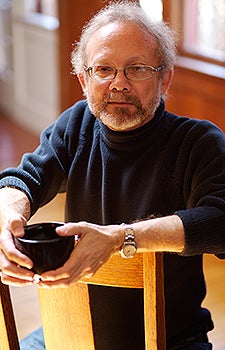Celebrating Collaboration
“Writer and Composer” is a unique interdisciplinary collaboration that draws students from three graduate-level classes offered through USC Dornsife and USC Thornton School of Music. Student writers, vocalists and composers collaborate on creative projects, culminating in a public performance of student work at semester’s end.
“To have writers, vocalists and composers together has created opportunities for collaboration that’s been unlike anything I know in any other graduate situation,” said David St. John, professor of English and comparative literature at USC Dornsife, course co-founder and instructor.
The popular course has been offered at USC every other year for 12 years. It is designed to help students better understand and appreciate the art of creating vocal music in a collaborative context.

“To have these three groups together has created opportunities for collaboration that’s been unlike anything I know in any other graduate situation,” “Writer and Composer” co-instructor David St. John said.
“We share a desire to combine words and music in ways that transcend what either words of music can do alone,” said course co-founder and instructor Frank Ticheli, professor of composition at USC Thornton. Another instructor is Lisa Sylvester of USC Thornton.
From a practical standpoint, the class covers professional matters for a student’s creative work, such as personal contract agreements, publisher agreements, performance rights, ownership and royalty allocations. But it can also act as a springboard for ongoing collaborations.
Poetry graduate student Doug Manuel wrote a poem from the perspective of the sister of Olaudah Equiano, who was a freed slave, prominent African abolitionist and author in the 18th century. Manuel worked with a composition student and vocalist to set the poem to music and song.
“I was drawn to this opportunity mainly for the collaboration,” Manuel said, “being able to see your work re-envisioned through somebody else’s eyes.”